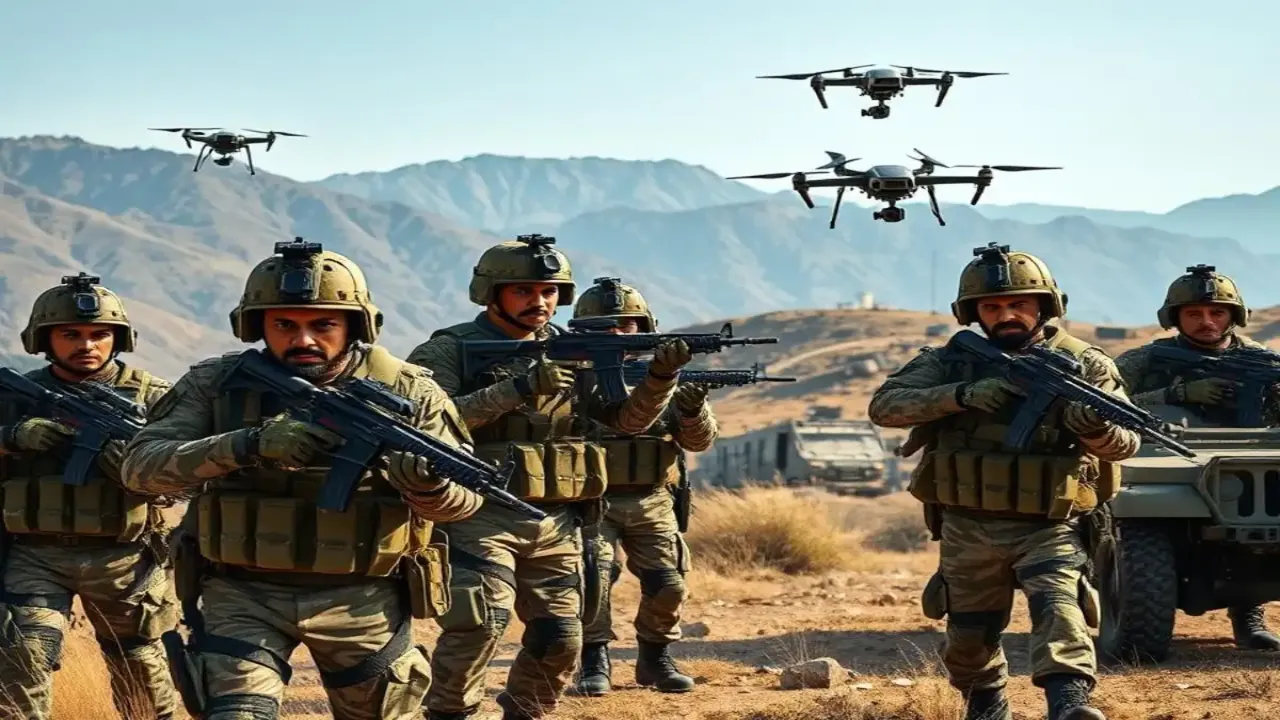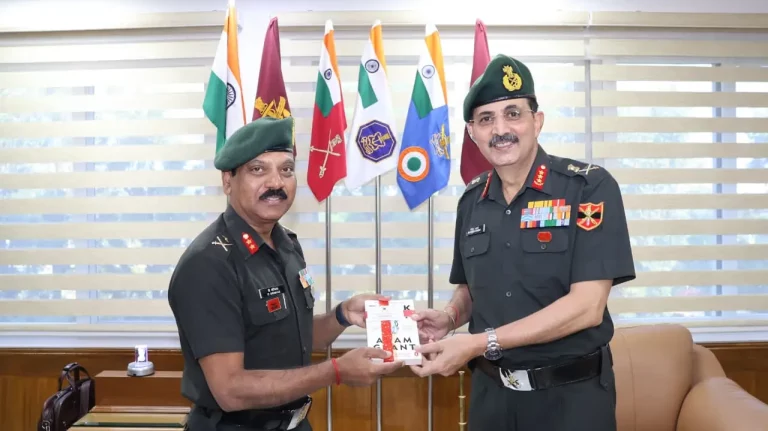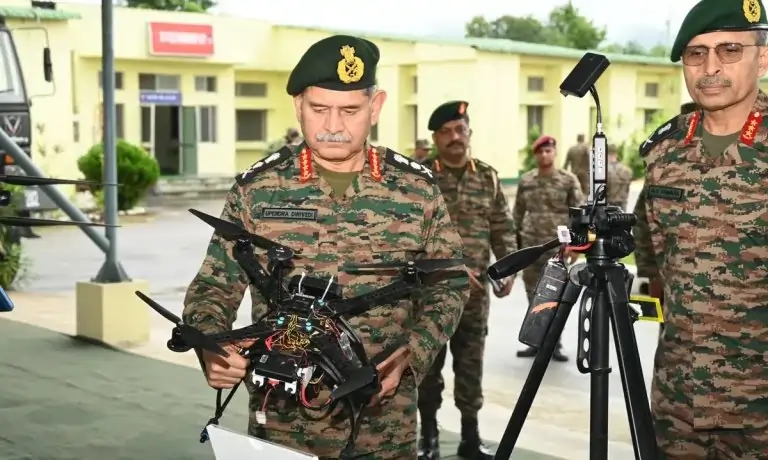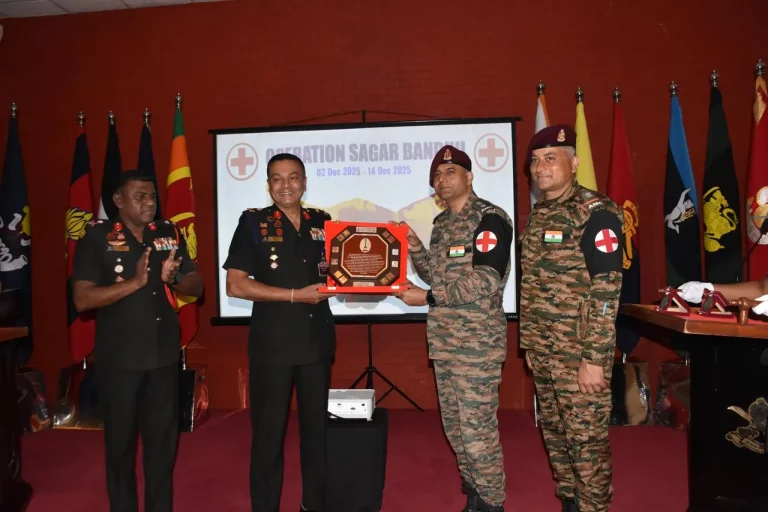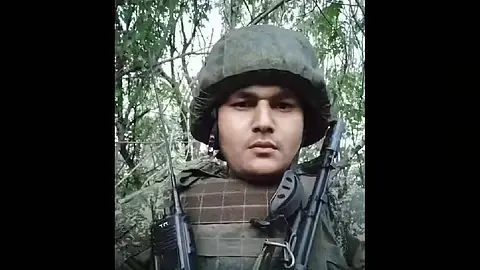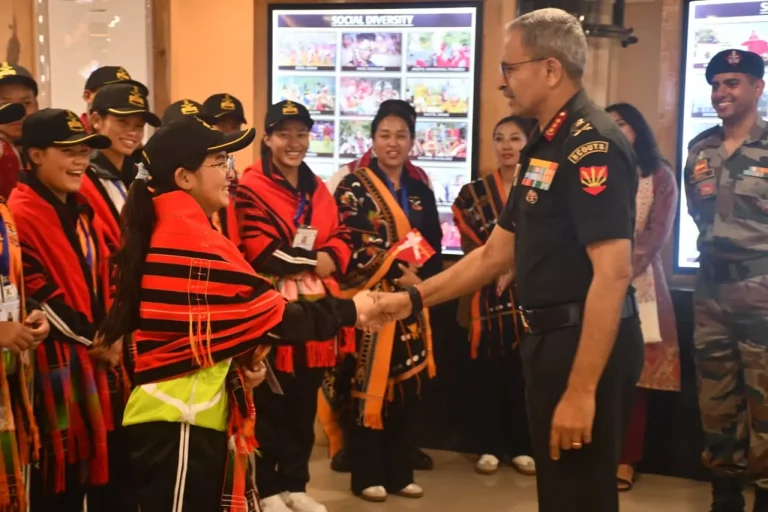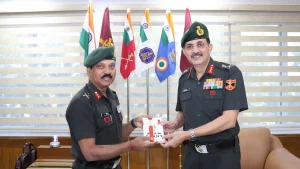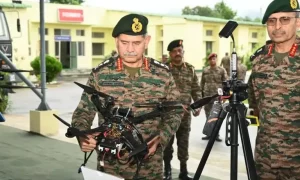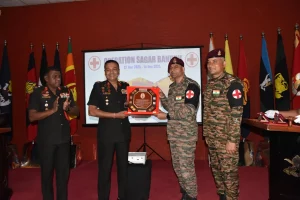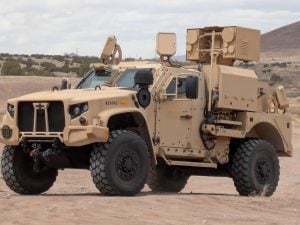In a significant advancement aimed at enhancing frontline capabilities, the Indian Army has successfully established dedicated ‘Ashni’ drone platoons within approximately 385 infantry battalions. This initiative is part of a broader strategy to modernize operations and improve battlefield effectiveness, as highlighted by the Army’s Director General of Infantry, Lieutenant General Ajay Kumar, during a recent media briefing.
The ‘Ashni’ platoon is designed to transform battlefield awareness and tactical responses, enabling the Indian Army to adapt to the fast-paced requirements of modern warfare. Each platoon will be equipped with ten drones — four designated for surveillance and reconnaissance missions, and six serving as loitering munitions, commonly referred to as kamikaze drones. This configuration aims to provide battalion commanders with immediate intelligence, surveillance, and reconnaissance (ISR) capabilities, along with rapid strike options. The integration of these drones is expected to streamline battlefield decision-making processes significantly.
In addition to the drone capabilities, the Army is also rolling out specialized ‘Bhairav’ light commando battalions. Each Bhairav battalion is composed of around 250 specially trained soldiers, equipped with embedded artillery, signals, and Army Air Defence units. This formation is tailored for high-agility operations, enabling swift tactical strikes in border areas and high-intensity situations. As part of the rapid deployment plan, five Bhairav battalions were deployed for immediate training starting October 1, with expectations of being fully operational by October 31. Training has already commenced for an additional four battalions, with a target to establish up to 25 battalions within six months.
The Army is also enhancing the lethality of its infantry troops through modern ordnance and small-arms upgrades. Initiatives unveiled by Lt Gen Kumar include the induction of contemporary 7.62 mm rifles, advanced anti-tank systems of the fourth and fifth generation, and new rocket launchers. A notable Rs 2,770 crore contract has been signed for 425,000 close-quarter battle carbines to replace the aging Sterling carbines, with Bharat Forge and PLR Systems handling the bulk of the supply, set to commence deliveries in September 2026.
These announcements, made ahead of the celebrated Shaurya Diwas (Infantry Day) on October 27, reflect a broader transformation initiative within the Indian Army. The objective is to create a more networked, lethal, and technology-enabled force capable of addressing contemporary military challenges. By embedding drone strike capabilities at the battalion level and establishing specialized light-strike units, the Army aims to compress the sensor-to-shooter loop while enhancing operational agility across various combat environments.
Lt Gen Ajay Kumar emphasized that the integration of drone technology, specialized battalions, and advanced small arms will significantly boost the infantry’s reconnaissance capabilities, target engagement options, and overall tactical flexibility—an essential evolution for navigating the complexities of both current and future battlefields.
